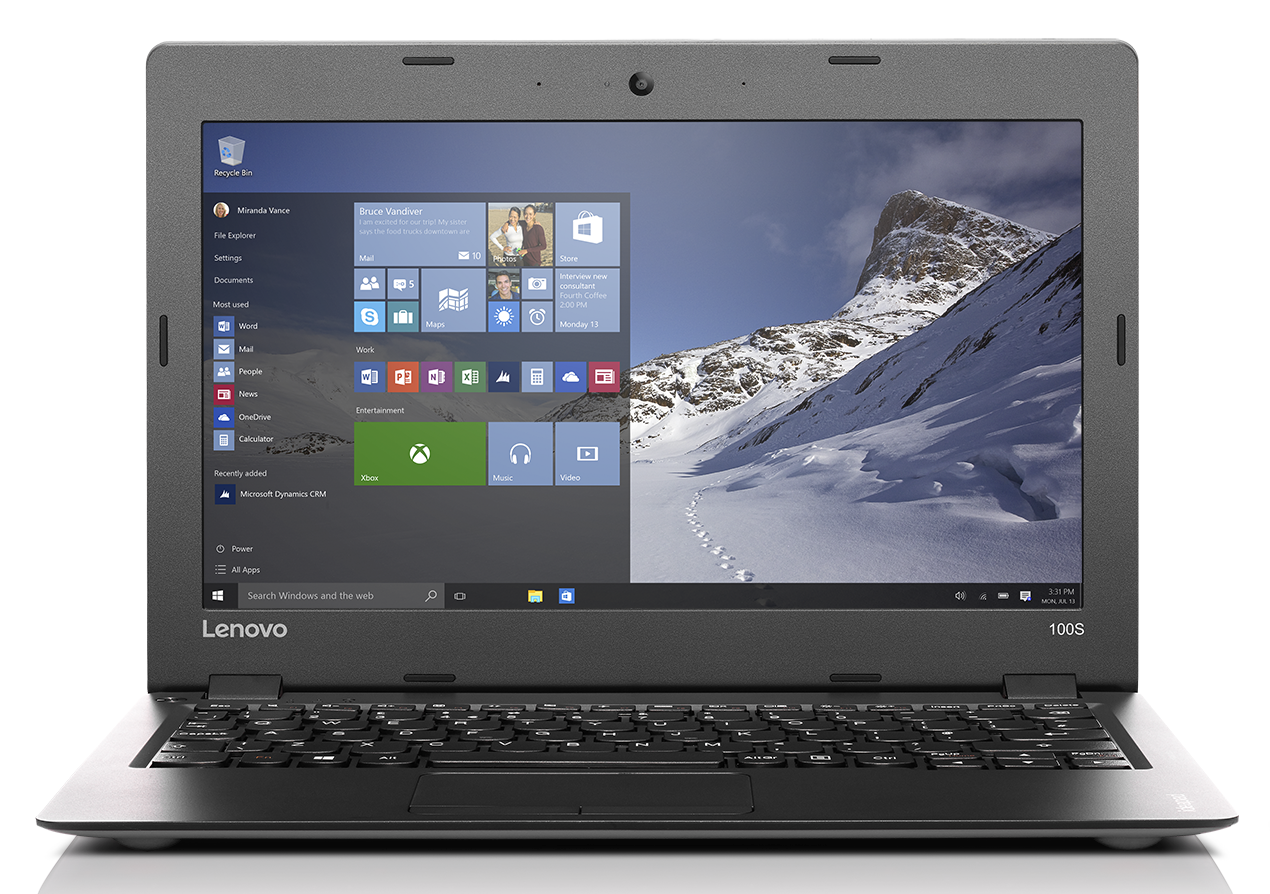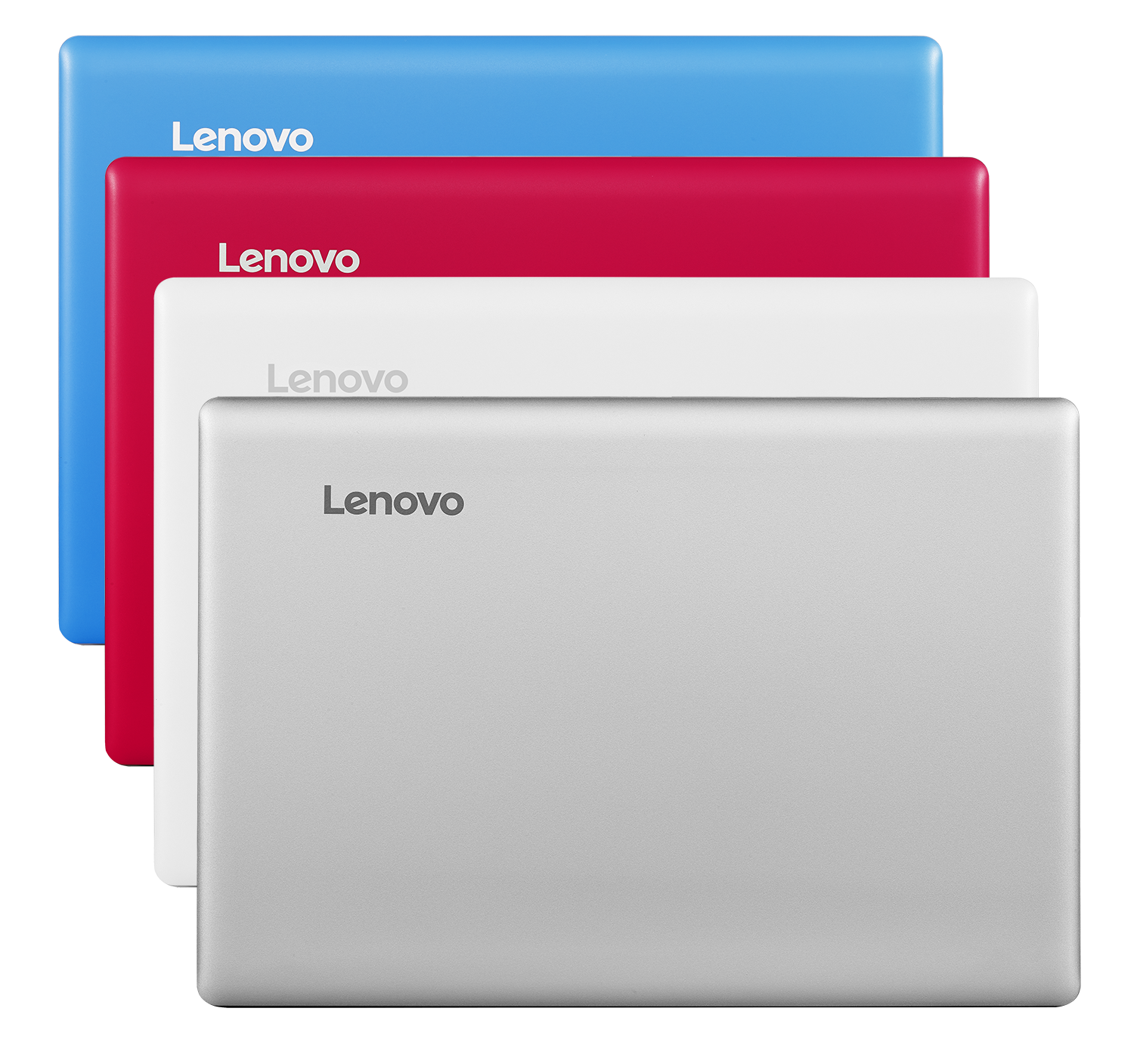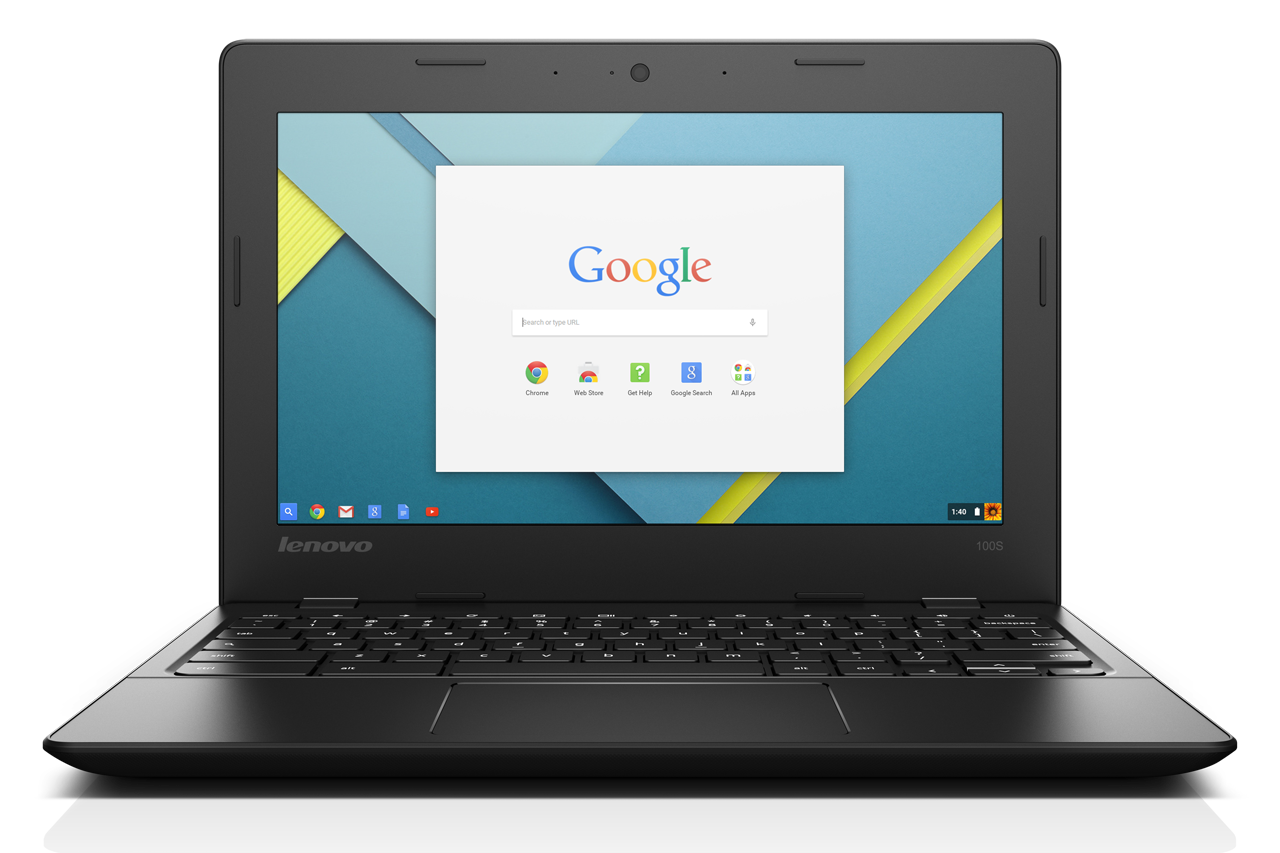Lenovo, Others Quietly Await Chromebook Versus Cheap Windows 10 Notebook Deathmatch Winner
For a while there, we were seeing a Chromebook boom. The likes of Dell, HP, Toshiba, Samsung and Acer quickly pushed out shockingly low-priced laptops (some as low as $200) running Google's Chrome OS, and they began gobbling up already-dwindling PC market share. It was only a matter of time before we would see similarly-priced Windows-based laptops crop up in an attempt to compete, and indeed, they've begun trickling out.
Two notable low-priced machines of this nature include HP's Stream and Acer's Aspire One Cloudbook. Both are Windows notebooks, both are remarkably inexpensive, and both use the cloud as a marketing tool. Both companies also make Chromebooks, and with the launch of two new devices, Lenovo has mimicked two of its foremost competitors in the PC market.
We Bring You Windows 10 And Chrome OS
Lenovo's entrants into the Chromebooks-versus-cheap-Windows-10-notebooks game are the Lenovo Chromebook 100S and the Lenovo ideapad 100S (a Windows machine). Here are their full specs:
| Header Cell - Column 0 | Lenovo ideapad 100S | Lenovo ideapad 100S | Lenovo Chromebook 100S |
|---|---|---|---|
| Size | 11.6 inches (1366x786) | 14 inches (1366x786) | 11.6 inches (1366x786) |
| Processor | Intel Atom Z3735F (Bay Trail, quad core) | Intel Atom Z3735F (Bay Trail, quad core) | up to an Intel Pentium N2840 (Bay Trail, dual core) |
| Graphics | Intel HD Graphics | Intel HD Graphics | Intel HD Graphics |
| RAM | up to 2 GB | up to 4 GB | up to 4 GB |
| Storage | up to 64 GB eMMC | up to 64 GB eMMCor256 GB SSD | up to 32 GB eMMC |
| I/O | -2 x USB 2.0-HDMI-SD Card -Audio jack-0.3 MP webcam | -2 x USB 2.0-HDMI-SD Card -Audio jack-0.3 MP webcam | -1 x USB 2.0-1 x USB 3.0-HDMI-HD webcam-Dual mics-Audio jack-4-in-1 card reader |
| Connectivity | -802.11 b/g/n Wi-Fi -Bluetooth 4.0 | -802.11 a/c Wi-Fi -Bluetooth 4.0 | 802.11 a/c Wi-Fi |
| Dimensions | -0.69 inches-2.2 lbs | -0.73 inches-3.1 lbs | -0.74 inches-2.64 lbs |
| Battery | up to 8 hours | up to 8 hours | up to 8 hours |
| OS | Windows 10 Home | Windows 10 Home | Chrome OS |
| Price | starts at $189 | starts at $259 | starts at $179 |
Nothing too scintillating there, right? These machines have decidedly budget specs (except for that 256 GB SSD option on the larger ideapad 100S), and to be honest, in person they look and feel like budget products, too. (Although we were not presented with the 14-inch 100S when we toured Lenovo's new lineup of devices, we did spend a bit of time with the 11-inch 100S and the 100S Chromebook.)
For example, the chassis are plastic, simple and chunky, and the bezel around the Chromebook's display is inexplicably enormous. They are not particularly attractive devices.
But no matter -- the price tags are attractive enough to make up for that, for many users.
Reaching For A Sky Already Owned By Chromebooks
Get Tom's Hardware's best news and in-depth reviews, straight to your inbox.
So what is Lenovo (and Acer and HP) playing at here? Chromebooks' market share grab from PCs was a surprise, but a potential takeback by deeply inexpensive Windows 10-based notebooks seems even more unlikely.
For one thing, these Cloudbook/Stream/ideapad 100S seem familiar, don't they? Years ago, we called them "netbooks." They were popular for but a moment -- until users got tired of their insufficient performance and often impossibly tiny displays and keyboards. They were located somewhere between Squintsville and Hand-Cramp City, on a road nobody wanted to traverse.
That's not to say this new spate of $200-ish Windows notebooks will suffer the same fate. For what it's worth, the Lenovo ideapad 100S (11-inch) offers a reasonably-sized touchpad and a keyboard that's approximately the same size as one found on a Chromebook.
No, the concern here has more to do with practical performance. You could say that these specs -- the Lenovo machines and HP Streams run quad-core Bay Trail chips, and the Acer Aspire One Cloudbook has a dual-core Braswell CPU -- more or less match up with Chromebook hardware, and that's mostly true. However, Chrome OS, by design, is extremely lightweight and demands relatively little from its processor, memory, storage and battery. It relies primarily on browser-based apps, successfully tapping into the bounty of the cloud.
Windows 10, on the other hand, is a full OS, and because of that people will likely attempt to use all the same applications on these low-powered lappies (in the same multitasking manner) that they do on more high-powered systems. The experience will not be the same.
Further, with respect to Acer, HP and Lenovo, the cloud-oriented marketing spiel seems a mite spurious. What exactly do these systems have to do with the cloud that other systems don’t? Are users just encouraged to try and use browser-based applications, such as Office 365, more than locally-run ones? The branding here is just not commensurate with what the products do.
They are not cloud-powered PCs. They are low-powered PCs.
Playing The Game
However consumers end up reacting to these laptops, OEMs are smart to throw in with both Chromebooks and cheap Windows notebooks. Companies like Acer and Lenovo are known for having a wide range of SKUs covering virtually any type of PC any user might want. It's not an elegant strategy -- it's stark contrast to Apple's "This is the sexy thing we made, take it or leave it" approach -- but it's not unwise.
If you have the ability to build and sell just about anything that computes, why not do just that, and see what consumers end up telling you with their wallets? How else would Acer, for example, have discovered that Chromebooks would be hot ticket items?
In the same way, Acer, HP and Lenovo are pumping out dirt cheap Windows notebooks alongside Chromebooks and are waiting to see which emerges the winner. Maybe Chromebooks prevail. Maybe these inexpensive Windows notebooks gain ground. Maybe there's room for both. The thing is, they don't care--they'll just back the winner(s).
Round 2: Fight!
Seth Colaner is the News Director at Tom's Hardware. Follow him on Twitter @SethColaner. Follow us @tomshardware, on Facebook and on Google+.
Seth Colaner previously served as News Director at Tom's Hardware. He covered technology news, focusing on keyboards, virtual reality, and wearables.
-
adgjlsfhk I got one of these for my dad, as he wanted a lot of battery life for little cost. Due to an accident that resulted in me using it a bunch, I can confirm that it is a great idea for many people. They run Mathmatica quite well, and as long as you don't have too many things open, they are quite responsive.Reply -
somebodyspecial I can tell you what I want: NVIDIA GPU's in them. PERIOD. Hopefully with the xmas 14nm Finfet editions from samsung ;) Someone better put out a 20in+ also, or they won't get a sale. I could use a 13-17in, but my dad wants a 20in+ 14nm NV soc in his next one. His nexus 10 is useless for gaming. He needs to be able to play on the TV with decent gpu perf. Apple is about to roll out their 14nm samsung/tsmc chips (80-90mil made supposedly), so NV should have them for Nov Nexus device and hopefully more from others with larger sizes. HP/Toshiba put out large ones by they keep using the older K1 etc.Reply -
Simon Mackay Some people even consider these computers more as an cheap alternative to a tablet or 2-in-1 when it comes to something to do email or similar tasks on when they are travelling while they maintain a desktop or large laptop as their main computer.Reply
The Windows-based computers may earn their keep if you work your email using a client-based solution like Outlook or Windows Live Mail rather than a Webmail approach.



